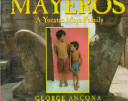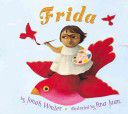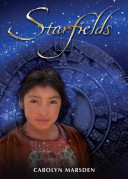
Describes the preparation of fireworks as well as the festival honoring San Juan de Dios, the patron saint of Tultepec, Mexico, which is famous for its master pyrotechnics
Materials from Mexico

Describes the preparation of fireworks as well as the festival honoring San Juan de Dios, the patron saint of Tultepec, Mexico, which is famous for its master pyrotechnics

Text and photographs present the life and customs of the descendants of the Maya now living in the Yucatan Peninsula area of Mexico.

Discusses the childhood of Frida Kahlo and how it influenced her art.

This gathering of poems and stories, told in both the original Spanish and translated English, transcends borders as it invites readers into a shared world of ideas, visions and dreams. Sixty-four great Mexican writers and painters are collected here, including Rosario Castellanos, Alberta Blanco, Octavio Paz, and Julio Galan.

After her beloved grandmother dies, Rosita hopes to be reunited with Abuelita as she prepares a gift to give her when her family celebrates the Day of the Dead.

While big changes are coming to her Mexican village, nine-year-old Rosalba hears that the Mayan calendar predicts the end of the world in 2012 and she dreams of an ancient Mayan boy, eyes bound in a shamanistic ritual, who hints at what Rosalba can do.

In ancient Mexico, beautiful Maya’s children are endangered by the threat of Senor Tiempo who, jealous of their immortality, plots to destroy them.
All over the world, there is a wealth of fascinating traditions and legends surrounding the Christmas story. Here are five festive folk tales, retold by Saviour Pirotta, originating from places as far-flung as Mexico and the Middle East, Northern Europe and North Africa. Sheila Moxley’s vivid artwork adds to the seasonal spirit, making this a true celebration of Christmas, throughout the world.
Read how the lost little camel’s perseverance, resourcefulness and bravery led him back to his mother and baby Jesus’ manger; How an old Baker woman’s kindness and ingenuity saves the life of Baby Jesus and feeds a starving village; The story of a how a goatherding father and daughter, guided by angels, journey to meet the newborn Saviour and present him with weeds that have been transformed into beautiful red Christmas flowers; How selfless little Kumbi puts the needs of others before her own and is rewarded with a gourd of overflowing water to replenish supplies amid drought in her village; Lastly, a Russian variation of the Father Christmas story, where Babushka delivers presents to children from her bottomless basket of toys.

It’s the first day of school, but before he goes Chepito runs outside to play. He comes across all kinds of people in his neighborhood — a man reading a newspaper, a young girl enjoying a comic, a couple of tourists consulting a guidebook, an archeologist studying hieroglyphics. “Why, why, why?” he sings, and they each have an answer for him. Later that day Chepito discovers for himself that reading is catching, and he even brings home a book to “read” to his younger sister.